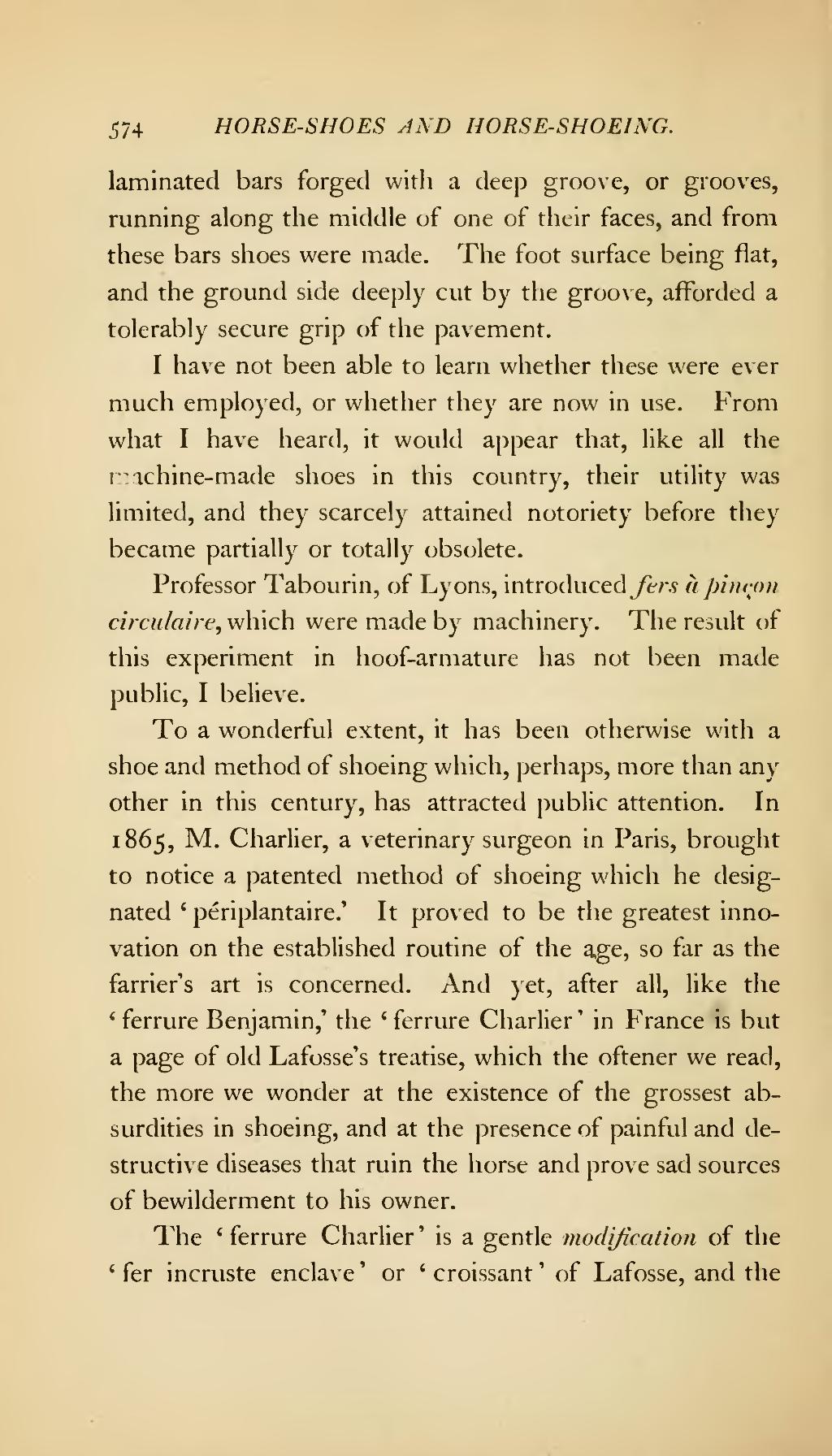laminated bars forged with a deep groove, or grooves, running along the middle of one of their faces, and from these bars shoes were made. The foot surface being flat, and the ground side deeply cut by the groove, afforded a tolerably secure grip of the pavement.
I have not been able to learn whether these were ever much employed, or whether they are now in use. From what I have heard, it would appear that, like all the machine-made shoes in this country, their utility was limited, and they scarcely attained notoriety before they became partially or totally obsolete.
Professor Tabourin, of Lyons, introduced fers à pinçon circulaire, which were made by machinery. The result of this experiment in hoof-armature has not been made public, I believe.
To a wonderful extent, it has been otherwise with a shoe and method of shoeing which, perhaps, more than any other in this century, has attracted public attention. In 1865, M. Charlier, a veterinary surgeon in Paris, brought to notice a patented method of shoeing which he designated 'periplantaire.' It proved to be the greatest innovation on the established routine of the age, so far as the farrier's art is concerned. And yet, after all, like the 'ferrure Benjamin,' the 'ferrure Charlier ' in France is but a page of old Lafosse's treatise, which the oftener we read, the more we wonder at the existence of the grossest absurdities in shoeing, and at the presence of painful and destructive diseases that ruin the horse and prove sad sources of bewilderment to his owner.
The 'ferrure Charlier' is a gentle modification of the 'fer incruste enclave' or 'croissant' of Lafosse, and the
